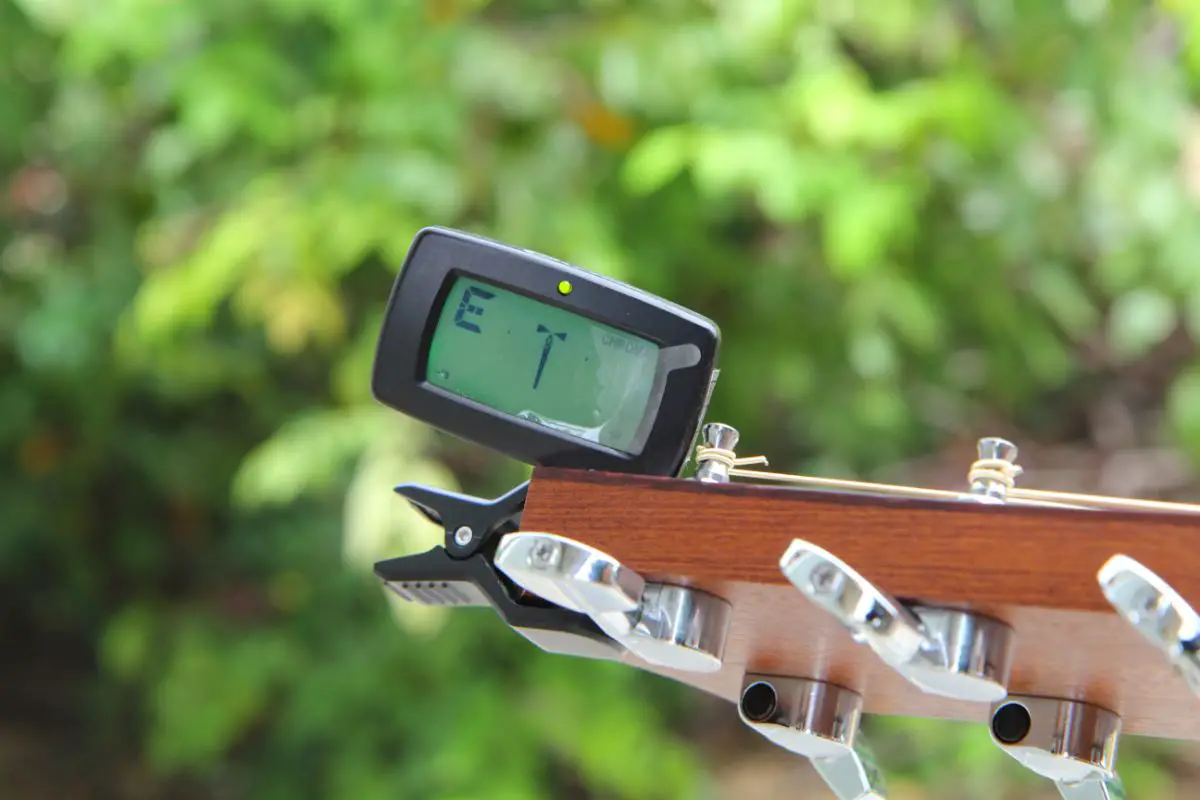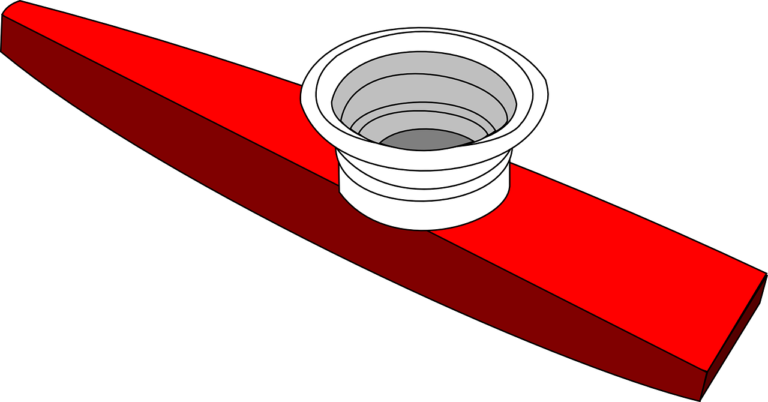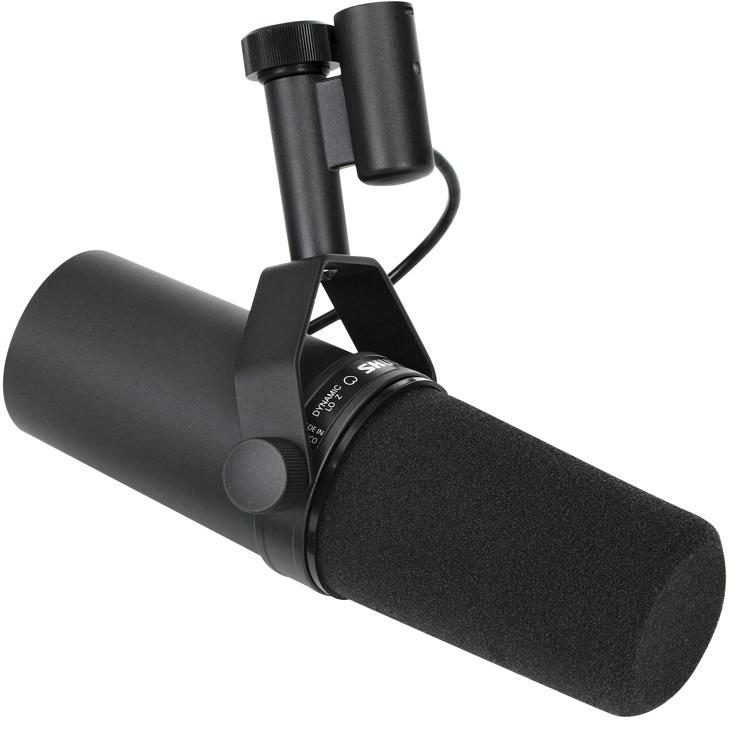The Best Clip On Guitar Tuner for Professional Musicians
Over 712 million people worldwide play the guitar. This instrument is at the heart of rock & roll, heavy metal, and several popular genres of music.
Learning to play the guitar can be very fulfilling, but it takes a lot of practice and dedication to progress. One thing that can take beginners a long time to get the hang of is tuning their instrument.
Andres Segovia, a famous Spanish virtuoso guitarist, once said that most guitarists will spend half of their life tuning their instrument and the other half playing out of tune.
It isn’t all about getting your guitar to sound good. There are several alternate tunings that musicians use to create unique sounds and chord progressions.
If you want to make tuning your instrument less of a headache you need a decent clip-on tuner.
You can clip these devices to the headstock of your guitar and will help you quickly tune your instrument. This allows you to keep your instrument in tune, and explore other alternate tunings with relative ease.
Below, you’ll find out how to find the best clip-on guitar tuners.
The Best Clip-On Guitar Tuner
Peterson StroboClip HD Clip-On Tuner
- True strobe 0. 1 Cent accuracy – accurate to 1/1000th of a Semitone or 1/1000th of a fret
Strobe tuners are a special electronic tuner that uses a stroboscope. It flickers a light at the same frequency as the string. This causes the display to rotate according to which direction you should tune in.
If the wheel moves to the left, your note is flat. Meanwhile, clockwise rotation shows that it is too sharp.
This StroboClip tuner is accurate to within 1/1000th of a semitone. This makes it a reliable tool for keeping your guitar sounding great.
It is a chromatic tuner, which means you can use it in a variety of circumstances. It isn’t just for putting your guitar in standard tuning.
There are pre-set ‘sweeteners’ which are settings to adjust the tuner. These can help you tune different instruments or access alternate tunings.
The large clip allows it to easily grip onto the headstock of your guitar. Since the clip opens very wide, it can also attach to other instruments, such as violins, cellos, or basses.
The bright LCD screen makes it easy to track the note you play and how close it is to being in tune.
Pros
- Extra wide clip for securely gripping to your guitar’s headstock.
- Highly accurate.
- Large display that is easy to read.
Cons
- The Sweetener setting is nice, but doesn’t do much that a regular chromatic tuner can’t do.
Snark ST-2 Multi-Instrument Chromatic Tuner
- Clip-on tuner that utilizes a high-sensitivity vibration sensor or an internal microphone
- High definition, full-color display that rotates 360°
- Boasts a faster and more accurate tuning chip
- Has a stay-put clip, a tap tempo metronome, and it has pitch calibration from 415 to 466 Hz
- Features an extended frequency range and is compatible with all instruments
The Snark ST-2 may not look like much. However, it is cheap, portable and accurate enough for making your guitar sound great. It comes with a sturdy clip and a thick rubber grip to prevent it slipping off the headstock.
Since it is a chromatic tuner, this device can sit on any kind of instrument, including trumpets, violins and basses.
The display makes it very easy to know if your note is too flat or too sharp. This will make getting your instrument in tune much faster. Since the tuner is chromatic, you can use it for a lot more than just standard tuning.
Thanks to the swivel head, you can easily rotate the screen to face you. This helps no matter where the tuner is on your instrument.
There is an internal mic built into the tuner. This means it can work off the vibrations from your instrument or from the sound of an amp.
It is suitable for both electric and acoustic guitars. The ST-2 also features a tap tempo metronome. With this, you can use it to keep time and keep your instrument in tune.
Pros
- Features inbuilt tap tempo metronome.
- Works well for both acoustic and electric instruments.
- Bright and easily readable display that can be swiveled to face you.
Cons
- The rubber pads on this tuner may harm the lacquer finish on your guitar’s headstock.
Fender “Bullet” Digital Chromatic Tuner
- Super bright LED display
- Extremely Small
- Rugged
If you are looking for something compact and rugged, then Fender has exactly what you are looking for. This bullet tuner is exceptionally small, but still packs all of the functionality you need from a basic tuner.
It has a bright display that is easy to read in any conditions. You won’t have any trouble getting your guitar ready for action, no matter where you are performing.
Fender mounted the display to a swivel head. That means you can rotate the tuner to face you no matter where it is. You can attach it to any part of your instrument or to a music stand if you prefer.
Since it is a chromatic tuner, you can use it for a lot more than just guitar. It will work for tuning any instrument.
There is a noise-proof vibration sensor inside the tuner. This means it will work even in a noisy room without interference from other instruments.
One problem: there is no auto-off function. This means you will have to turn it off manually to avoid wasting your battery. However, aside from this, you can rely on this bullet tuner to be accurate, durable and very versatile.
Pros
- Compact design that is rugged and durable.
- The swivel head can be rotated 360° to face you.
- You can read the bright LCD screen easily
Cons
- No Auto-Off feature
Korg AW-OTG-POLY Tuner
- Cutting-edge OLED display technology provides an unprecedented degree of visibility.
- The guitar-specific AW-OTG-POLY features intuitive chord finder function
- Ultra-high precision tuning with accuracy as great at ±0.1 cents. Optional STROBE feature further improves accuracy.
- Alternative tuning animations included to make tuning fun!
- Calibration, memory backup and auto-power-off functions.
We would recommend buying a chromatic tuner if you can. They are much more versatile than alternative options.
That said, this polyphonic tuner has its own advantages. It is a great option for those who rarely deviate from standard guitar tuning. It lets you strum all the guitar strings at once and instantly tell which ones are out of tune.
This is an important feature if you play gigs. You know how annoying it can be if your instrument slips out of tune while playing. With the AW-OTG-POLY tuner, you can strum and instantly tell if that last string bend made you off tune.
It also has settings for putting your guitar in drop-D or tuning all of the strings a ¼ step down from standard.
The LCD screen on this unit is easy to read even outside in high glare. You can also use strobe mode to activate a stroboscope tuner inside the device. This feature provides much better accuracy.
After you are done, you can leave the tuner turned on. It will automatically turn off to conserve its battery.
Pros
- Allows you to strum all of your strings and see which ones are out of tune.
- Settings for drop-D and E-flat standard tuning.
- Strobe mode for better accuracy.
Cons
- No chromatic setting.
D’Addario Planet Waves NS Micro Headstock Tuner
- Built-in piezo transducer picks up instrument’s vibration rather than sound
- Improved software for faster response and improved accuracy
- Tri-color reversible backlit LCD screen makes it easy to tune in dark environments while allowing mounting in front or behind headstock
- Wide calibration range (410Hz to 480Hz) and visual metronome
- Compact design blends into the aesthetics of instrument while adding considerably less weight than other headstock tuners
The D’Addario NS Micro is another miniature tuner you can slip into your gig bag easily. You can take it to practice sessions and performances while taking up little space.
With a built-in Piezo transducer, this device relies on vibration instead of sound. This means you can use it perfectly well in noisy environments. If you are part of a band, this is very useful. It means other people playing won’t interfere with your tuning.
Instead of a clip, the Planet Waves NS has a ratchet clamp. This feature makes it easy to attach to any size of headstock. This also means you can adjust how the tightness of the tuner to the headstock. It prevents the rubber pads leaving marks.
You can attach this device to your instrument however you want. This is thanks to the flip button that allows you to invert the display.
The Tri-color back-lit LCD screen makes this product easy to read. You can tune your instrument in the dark while you are waiting backstage.
Since the NS is a chromatic tuner, you can use it on any kind of instrument that you want. There is also an inbuilt metronome function, so you can easily keep time during practice sessions.
Pros
- Easy to read and use.
- You can attach to your instrument in any configuration.
- Features an inbuilt metronome.
Cons
- May not be accurate enough for recording.
TC Electronic POLYTUNE CLIP
- Poly tune technology – tune all 6 strings simultaneously
- Chromatic (/- 0.5 cent) and extra accurate strobe (/- 0.02 cent) modes
- Ultra-bright and easy to read adaptive display – ensures a perfect readout No matter what orientation clip is attached
- Flat tuning and capo modes
- Elegant yet durable design, with high-quality stainless steel clip
TC electronics make some great pedals and equipment for guitarists. It should come as no surprise that they also make very good tuners.
This clip-on tuner has a flat display mounted on a hinge. This means you can make it face you wherever it is on your instrument. The stainless steel clip on the back is both sturdy and unlikely to slide off.
You might think that since this is a polyphonic tuner, it is only compatible with a guitar. However, this device allows you to access chromatin tuning and a function for strumming all six strings. This means you can tune them simultaneously.
The display is easy to read. Beginners will have no trouble spotting if they are too sharp or too flat.
There are inbuilt modes for working alongside a capo, or for putting your guitar into Drop-D.
You can switch between chromatic tuning, or stroboscopic tuning for better accuracy when you need it. Overall, this is a compact and highly effective little tuner. It will keep your guitar sounding great on recordings and at gigs.
Pros
- Offers both polyphonic and chromatic tuning.
- Strobe mode offers better accuracy.
- Large, easy-to-read display.
Cons
- May damage the finish on your headstock if left attached.
Buyers Guide
Tuners are relatively simple devices, but there is still a lot of variety between the various clip-on models.
Finding the right tuner for you will come down to what situations you want to use it in. The right tuner also changes depending on what style of guitar you play. Read on for helpful tips about how to find the best clip on guitar tuner.
How to measure the accuracy of your clip-on guitar tuner
Youcan measure the accuracy of a tuner in two ways, either in cents or semitones. We consider cents the better measurement since they are more specific and don’t require a conversion.
There are 100 cents in a single semitone. So, for example, a tuner like the Peterson Stroboclip, which is accurate to within 0.1 cents, will detect differences in pitch of 1/1000th of a semitone.
This is great, but the only time you will need this accuracy is when you are recording in a studio. During live performances, or just for general practice, it is okay to have a less accurate tuner.
After all, your ear will struggle to hear the difference between a note that is perfectly in tune or 1/1000th of a semitone off.
Different types of tuners you need to know about
Chromatic tuners are the most popular which can recognize any pitch and are the most versatile. You can use a chromatic tuner on a guitar, trumpet or violin with no problem.
One of the best things about chromatic devices is that they can easily put your instrument into an alternate tuning. Advanced musicians can use special settings to make their instrument sound different.
There are also polyphonic tuners, which are more specific than chromatic models. Manufacturers build these devices to recognize the pitch of each string. They are not as versatile when used on other instruments.
Polyphonic tuners allow you to strum all the strings at once and instantly see which ones are out of tune. This is useful during performances or gigs. In these situations, you need to know when your instrument has dropped out of tune, so you can fix it.
Another type of tuner you will see is stroboscopic models. These use a device known as a stroboscope that rotates to match the frequency of the note you play.
Stroboscopic tuners can be a little more difficult to read, but offer unparalleled accuracy. They are the perfect choice for anyone who needs to be perfectly in tune for a studio recording.
Sometimes more than one of these mechanisms will be part of the same device. This is the case with the Korg AW-OTG-POLY.
This tuner has both a polyphonic and stroboscopic mechanism. This allows the user to tell if their guitar is in tune at a glance and is more accurate.
Vibrations vs noise sensors in clip-on guitar tuners
Some tuners will detect the pitch of a note using a vibration sensor. Others will rely on a noise sensor. Both methods can work equally well, and should be used in different situations.
A tuner with a noise sensor works great when practicing on your own. However, it won’t be as effective in a noisy area.
If you are part of a band, then noise sensors can struggle. The tuner may have a hard time sorting between your notes and the background noise.
Under these circumstances, it is best to have a tuner that relies on a vibration sensor. These are just as accurate as other models and won’t be confused by background noise.
Looking for a good clip in your guitar tuner
The clip is one of the simplest parts of a tuner, but also one of the most important. You want a tuner that can grip securely to the headstock of your guitar without slipping or popping off.
This is especially crucial with smaller tuners, which you can lose if they fly off without you noticing.
Some tunes have thick rubber pads, which provide good grip. However, you can’t leave them on the guitar for extended periods of time. This is because the rubber used can leave marks or damage the finish on the headstock of your instrument.
You also need to watch out for damage left by tuners with metal clips. These are likely to scratch away lacquer if not removed carefully.
It is also important to consider how the display mounts to the clip. Most models of tuner will have a swivel head. This head can rotate the display to face you, no matter where you have clipped the tuner.
Frequently Asked Questions
What Are Some Common Alternate Tunings?
Most guitarists will know standard tuning (EADGBE) but there are lots of different ways you can tune your instrument.
Drop D tuning (DADGBE) is common in metal music, since it makes the top string much deeper. It is also common for some musicians to write songs with all the strings on their guitar tuned a ¼ step down.
Keith Richards from the Rolling Stones used to tune his guitar to sound like a banjo. To do this, he removed the fat E-string and tuned the other accordingly: GDGBD.
Nick Drake was also a fan of alternate tunings and used one of personal favorites for folk music, which goes CGCFCE













